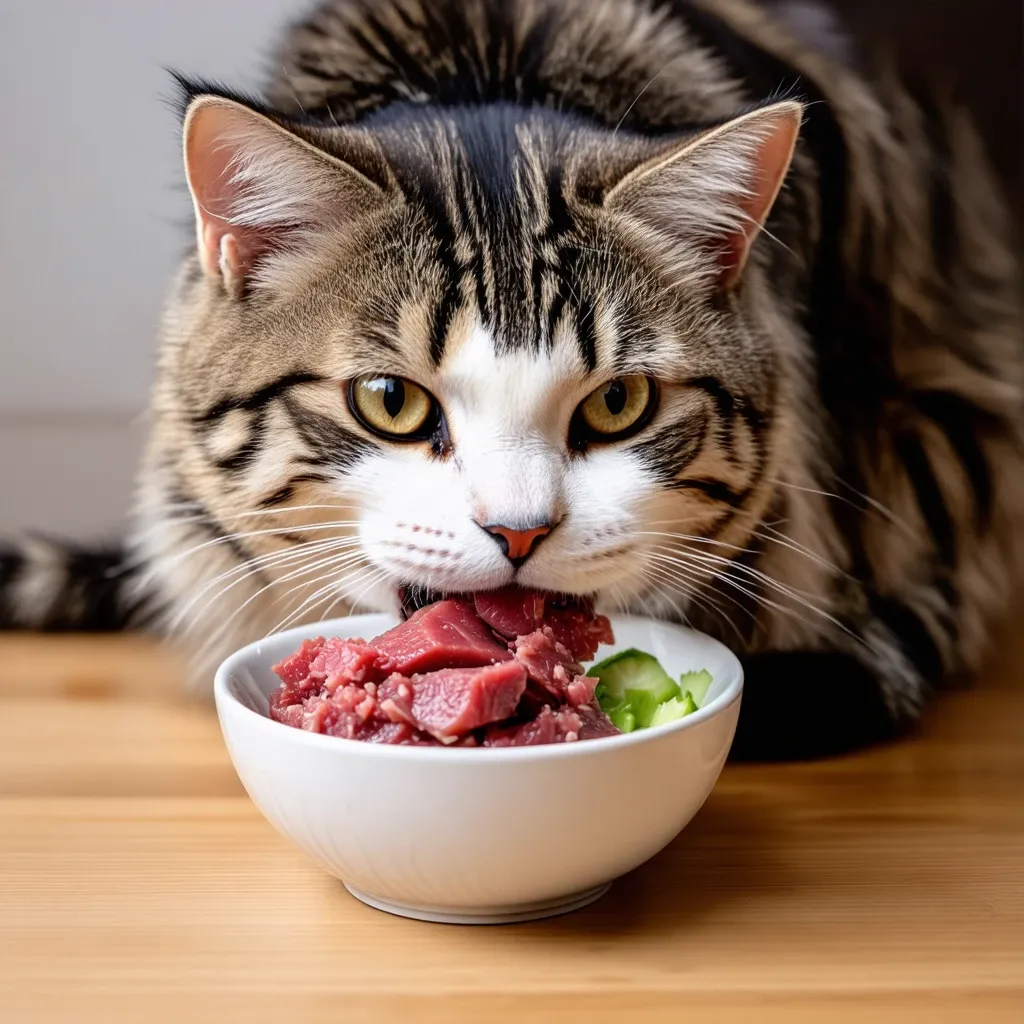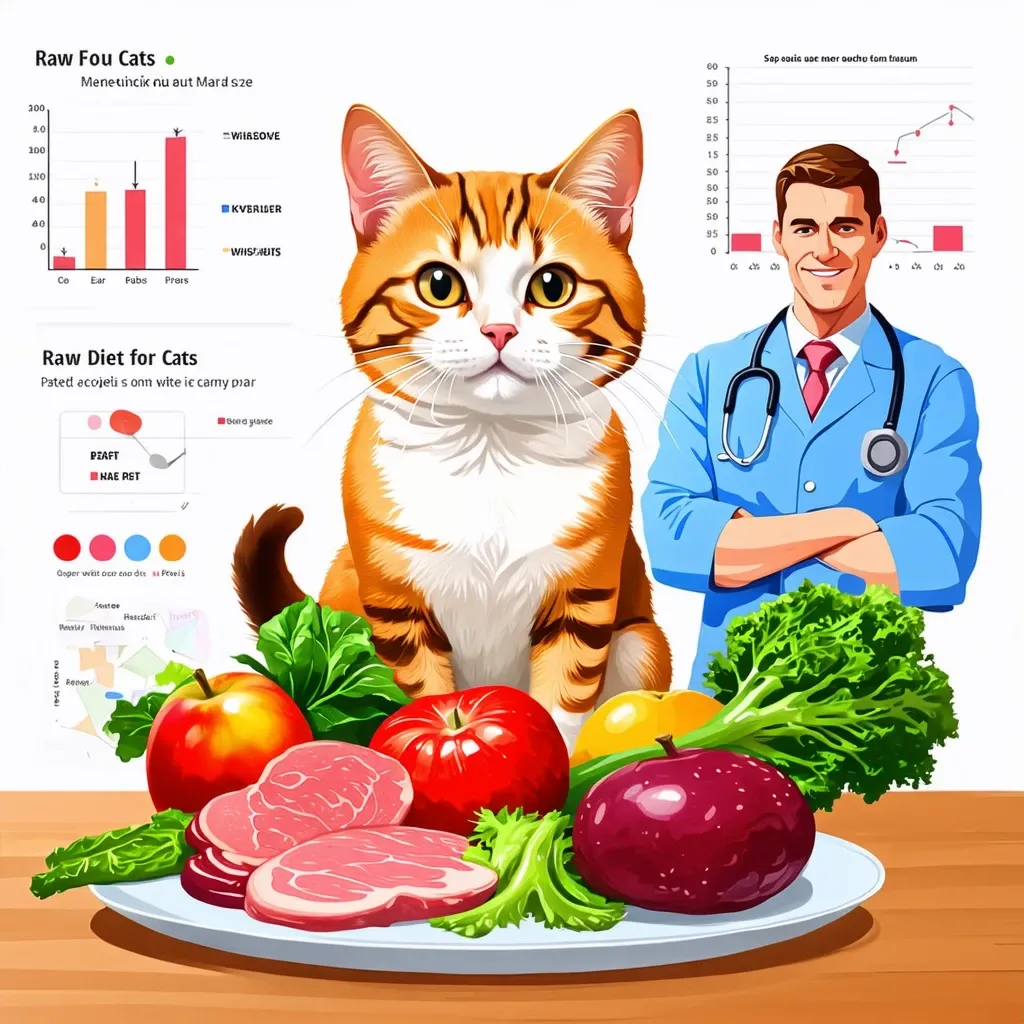Introduction
As a cat owner, you want to provide your feline friend with the best possible diet to ensure their optimal health and well-being. With the rise of raw feeding, many cat owners are considering switching from traditional commercial cat food to a raw meat diet. However, the question remains: Can I feed my cat raw meat from the grocery store?
Feeding your cat raw meat from the grocery store may seem like a convenient and cost-effective option, but it’s essential to consider the potential risks and benefits associated with this diet. In this article, we will delve into the world of raw feeding and explore the pros and cons of feeding your cat raw meat from the grocery store.

We will discuss the safety concerns, nutritional benefits, and potential risks of a raw diet for your cat. Additionally, we will provide guidance on how to transition your cat to a raw meat diet and ensure they receive a balanced and healthy diet.
Whether you’re a seasoned cat owner or a newcomer to the world of raw feeding, this article aims to provide you with the information you need to make an informed decision about your cat’s diet.
Is Feeding My Cat Raw Meat from the Grocery Store Safe?
Feeding your cat raw meat from the grocery store can be a safe option, but it’s crucial to take certain precautions to minimize the risk of bacterial contamination and ensure your cat receives a balanced diet.
Understanding the Risks
Raw meat from the grocery store can contain bacteria like Salmonella and E. coli, which can be harmful to both cats and humans. Additionally, raw meat may not provide all the necessary nutrients for your cat’s optimal health.
Precautions to Take
To minimize the risks associated with feeding your cat raw meat from the grocery store:
- Handle the raw meat safely: Wash your hands thoroughly before and after handling raw meat, and make sure to store it in a sealed container to prevent cross-contamination.
- Choose the right meat: Opt for fresh, organic meat from reputable sources. Avoid meat that has been previously frozen or has an unusual smell.
- Balance the diet: Ensure that your cat’s diet is well-balanced by providing a variety of raw meats, including muscle meat, organs, and bones.
Benefits of a Balanced Raw Diet
A balanced raw diet can provide numerous benefits for your cat’s health, including:
- Improved digestion
- Healthier coat and skin
- Increased energy levels
- Reduced risk of chronic diseases
Consult with a Veterinarian
Before making any changes to your cat’s diet, it’s essential to consult with a veterinarian to determine the best approach for your cat’s specific needs.
Benefits of a Raw Diet for My Cat
A raw diet for cats can have numerous benefits for their overall health and well-being. Here are some of the advantages of feeding your cat a raw diet:
- Improved Digestion: Raw diets are rich in enzymes that help break down proteins and fats, making it easier for your cat to digest their food. This can lead to fewer digestive issues and a healthier gut.
- Increased Energy: Raw diets are often higher in protein and lower in carbohydrates, which can provide your cat with more energy and vitality.
- Shinier Coat: The high moisture content in raw diets can help keep your cat’s coat shiny and healthy.
- Reduced Allergies: Some cats may develop allergies to certain ingredients in commercial cat food. A raw diet can help reduce the risk of allergies and skin problems.
- Stronger Immune System: Raw diets contain a variety of nutrients and antioxidants that can help boost your cat’s immune system and reduce the risk of illness.

It’s essential to note that a raw diet may not be suitable for all cats, especially those with certain health conditions or nutritional deficiencies. It’s crucial to consult with a veterinarian before making any changes to your cat’s diet.
Risks of a Raw Diet for My Cat
While a raw diet may seem like a natural and healthy option for your cat, there are several risks to consider before making the switch. Here are some of the potential risks associated with a raw diet for your cat:
Risk of Bacterial Contamination
Raw meat can be contaminated with harmful bacteria, such as Salmonella, L. monocytogenes, Listeria, and E. coli, which can cause illness in both cats and humans. It’s essential to handle and store raw cat food properly to minimize the risk of bacterial contamination.
Guidelines to Avoid Infection
To avoid the risk of getting an infection from your cat or the raw food, follow these guidelines:
- Wash your hands thoroughly with soap and water after you touch raw cat food.
- Disinfect everything that comes into contact with the raw food, including countertops, utensils, and your cat’s food and water bowls.
Risks for Humans
The risks for humans have been extensively documented, and cats that are intended as emotional support animals cannot legally be put on a raw meat-based diet because of these risks.
Additional Considerations
In addition to the risk of bacterial contamination, raw diets may be more expensive and time-consuming than non-raw options, especially if the diets are being prepared at home. A raw food diet (RFD) usually includes raw muscle meat, organ meat, and ground bones, which can be difficult to balance and ensure that your cat is getting all the necessary nutrients.
While a raw diet may seem like a natural and healthy option for your cat, it’s essential to carefully consider the potential risks and take steps to minimize them. If you’re considering a raw diet for your cat, consult with your veterinarian to determine the best course of action.
Transitioning My Cat to a Raw Meat Diet
Transitioning your cat to a raw meat diet requires patience, careful planning, and a gradual introduction to the new food. Here are some steps to follow:
Step 1: Consult with Your Veterinarian
Before making any changes to your cat’s diet, it’s essential to consult with your veterinarian to ensure that a raw meat diet is suitable for your cat. Your veterinarian can help you determine the best approach for your cat’s specific needs and health status.
Step 2: Choose a High-Quality Raw Meat Source
Select a reputable supplier of raw meat, and choose a product that is specifically formulated for cats. Ensure that the meat is fresh, handled, and stored properly to minimize the risk of contamination.
Step 3: Start with Small Amounts
Begin by introducing small amounts of raw meat into your cat’s diet, such as 1/4 teaspoon per pound of body weight per day. Gradually increase the amount over several weeks or months, monitoring your cat’s digestive health and adjusting the amount as needed.
Step 4: Mix with Current Food
Mix the raw meat with your cat’s current food to help them adjust to the new taste and texture. Start with a 25/75 ratio (25% raw meat, 75% current food) and gradually increase the proportion of raw meat over time.
Step 5: Monitor and Adjust
Monitor your cat’s health, energy levels, and stool quality during the transition period. Adjust the amount and type of raw meat as needed to ensure a smooth transition.
Remember, every cat is different, and it’s crucial to tailor the transition process to your cat’s individual needs and preferences.
Ensuring a Balanced and Healthy Raw Diet for My Cat
Ensuring a balanced and healthy raw diet for your cat is crucial to their overall health and well-being. A well-planned raw diet can provide your cat with the necessary nutrients, vitamins, and minerals they need to thrive. Here are some tips to help you ensure a balanced and healthy raw diet for your cat:
1. Consult with a Veterinarian or a Qualified Animal Nutritionist
Before making any changes to your cat’s diet, it’s essential to consult with a veterinarian or a qualified animal nutritionist. They can help you determine the best diet for your cat based on their age, health, and lifestyle.
2. Choose High-Quality Ingredients
Choose high-quality, fresh ingredients that are rich in nutrients. Look for ingredients that are organic, free-range, and hormone-free. Avoid ingredients that are high in fillers, by-products, and artificial preservatives.
3. Balance the Macronutrients
A balanced raw diet for cats should include a mix of protein, fat, and carbohydrates. The ideal macronutrient ratio for cats is:
- Protein: 30-40%
- Fat: 20-30%
- Carbohydrates: 2-4%
4. Include a Variety of Foods
Include a variety of foods in your cat’s diet to ensure they are getting all the necessary nutrients. Some examples of foods that are suitable for a raw diet include:
- Meat (chicken, beef, fish, lamb)
- Organs (liver, kidney, heart)
- Bones (chicken necks, beef knuckle bones)
- Vegetables (sweet potatoes, carrots, green beans)
- Fruits (apples, blueberries, strawberries)
5. Avoid Common Mistakes
Avoid common mistakes that can lead to an unbalanced diet, such as:
- Over-supplementation with vitamins and minerals
- Under-supplementation with essential nutrients
- Feeding too much of a single food group
- Not providing enough variety in the diet
6. Monitor Your Cat’s Health
Monitor your cat’s health closely when transitioning to a raw diet. Keep an eye on their stool quality, energy levels, and overall health. Make adjustments to the diet as needed to ensure your cat is thriving.

By following these tips, you can ensure a balanced and healthy raw diet for your cat. Remember to always consult with a veterinarian or a qualified animal nutritionist before making any changes to your cat’s diet.
Conclusion
Feeding your cat a raw diet can be a great way to provide them with a diet that mimics their natural diet, high levels of protein, and essential nutrients. However, it’s essential to ensure that the diet is balanced and safe for your cat.
To achieve a balanced raw diet, it’s crucial to include a variety of meats, organs, and bones. This can be done by consulting with a veterinary nutritionist who can help craft a menu that meets your cat’s nutritional needs.
Some of the benefits of a raw diet for cats include:
- Improved digestion
- Healthier coat
- Increased energy levels
- Reduced risk of chronic diseases
However, it’s also important to be aware of the potential risks associated with feeding raw meat to cats, such as the risk of pathogens like Salmonella and E. coli.
To minimize these risks, it’s recommended to:
- Handle raw meat safely and hygienically
- Choose high-quality raw meat from reputable sources
- Gradually introduce raw meat into your cat’s diet to prevent digestive upset
In conclusion, feeding your cat a raw diet can be a great way to provide them with a healthy and balanced diet, but it’s essential to do it safely and responsibly.

















